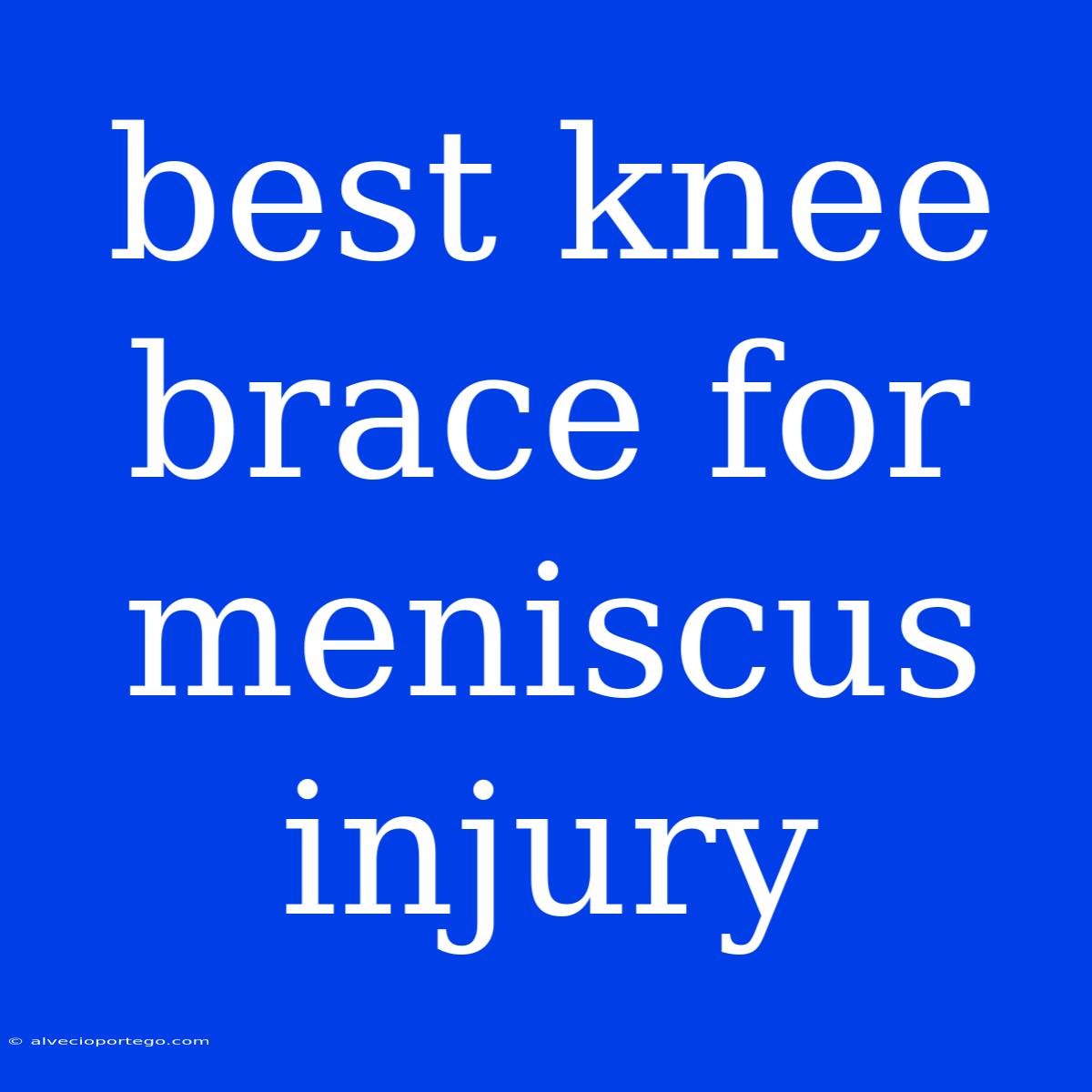Best Knee Braces for Meniscus Injuries: Support and Recovery
A meniscus tear can be a painful and debilitating injury, significantly impacting your mobility and daily activities. While rest, ice, and physical therapy are essential parts of recovery, a good knee brace can provide crucial support, pain relief, and promote faster healing. Choosing the right brace for your specific needs and injury is crucial.
Understanding Meniscus Injuries and Bracing
The meniscus is a C-shaped piece of cartilage that acts as a shock absorber in your knee. A tear can occur due to sudden twisting, impact, or overuse, causing pain, swelling, and difficulty with movement.
Knee braces for meniscus injuries are designed to:
- Stabilize the knee: Reducing stress and strain on the injured meniscus.
- Provide compression: Decreasing inflammation and pain.
- Limit movement: Restricting activities that could further damage the meniscus.
Types of Knee Braces for Meniscus Injuries
Here's a breakdown of common knee brace types:
1. Hinged Knee Braces:
- Best for: Moderate to severe meniscus tears, providing maximum support and stability.
- Features: Adjustable hinges that limit knee movement, often with adjustable straps for a custom fit.
- Advantages: Excellent for preventing hyperextension and instability.
- Disadvantages: Can be bulky and restrictive.
2. Functional Knee Braces:
- Best for: Mild to moderate meniscus tears, promoting controlled movement and support.
- Features: Less restrictive than hinged braces, allowing for a wider range of motion, often with adjustable compression.
- Advantages: More comfortable and easier to wear during daily activities.
- Disadvantages: May not provide the same level of stability as hinged braces.
3. Patellofemoral Braces:
- Best for: Injuries involving the kneecap, such as patellofemoral pain syndrome (runner's knee).
- Features: Designed to support the kneecap, often with a pad that helps align it properly.
- Advantages: Can be effective for reducing pain and improving function.
- Disadvantages: Not specifically designed for meniscus tears.
4. Unloader Braces:
- Best for: Osteoarthritis, but can also be helpful for some meniscus injuries.
- Features: Offload weight from the joint, reducing stress on the injured area.
- Advantages: Can significantly reduce pain and improve mobility.
- Disadvantages: May not be suitable for all types of meniscus injuries.
Choosing the Right Knee Brace: Factors to Consider
- Severity of the injury: A mild tear may only need a functional brace, while a more severe tear may require a hinged brace.
- Activity level: If you're highly active, you'll need a brace that provides strong support and allows for controlled movement.
- Comfort and fit: A brace should be comfortable and fit properly for optimal support.
- Doctor's recommendations: Your doctor can recommend the best brace based on your specific injury and needs.
Important Notes
- Consult your doctor: Always consult your doctor before using any knee brace, especially after a meniscus injury.
- Proper fit: Ensure the brace fits snugly but comfortably.
- Wear as instructed: Follow your doctor's guidelines for wearing and removing the brace.
- Regularly check for adjustments: Adjust the brace as needed for optimal support and comfort.
Remember: A knee brace is a supportive tool, not a cure. It's crucial to follow your doctor's advice and rehabilitation program for complete healing and recovery.

